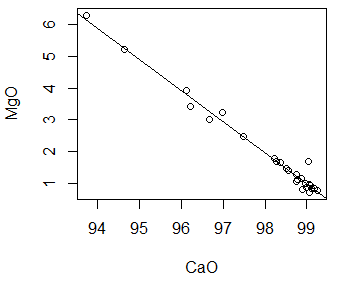My thesis is on the subject of finding residents at risk in an earthquake in Vancouver, BC, Canada. Yesterday I received a six month posting with City of Vancouver to use Hazus to perform analysis for two initiatives that the City has commissioned:
- Costal Flood Risk Assessment
- Earthquake Risk Management Project
These areas align directly with my thesis area of study. I will get to use leading-edge software to understand geographic information systems on a deeper level while creating a useful infrastructure for use by the City of Vancouver in its emergency planning. This is an exciting opportunity for me, and I hope that the City’s investment in this initiative will be repaid many times over.

 It is a scatterplot where each point represents the value of magnesium for a given value of calcium in limestone.
It is a scatterplot where each point represents the value of magnesium for a given value of calcium in limestone.